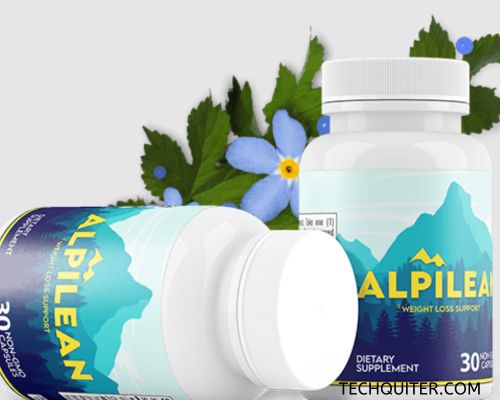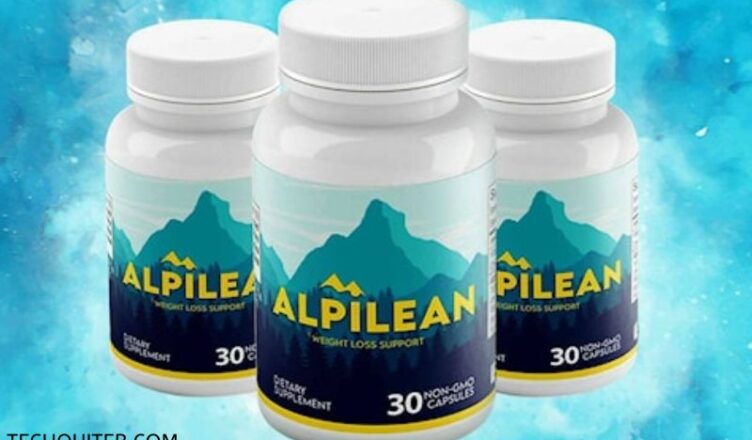Introduction: Understanding the Benefits of Alpine Ice Hack Weight Loss
Alpine Ice Hack Weight Loss climbing is a challenging and exhilarating sport that involves scaling frozen waterfalls and steep ice formations. While it may seem like an activity reserved for experienced climbers, alpine ice hacks can be a great way to aid in weight loss and improve overall fitness. By incorporating alpine ice climbing into your exercise routine, you can increase calorie burn, improve cardiovascular health, and challenge your body in new and exciting ways.

The Science Behind Alpine Ice Hacks and Weight Loss
The science behind how alpine ice hacks can aid in weight loss lies in the intensity and duration of the activity. Alpine ice climbing requires a significant amount of strength, endurance, and balance, which leads to a high-calorie burn. Studies have shown that a 150-pound person can burn up to 700 calories per hour while climbing ice. This is due to the combination of aerobic and anaerobic exercise that occurs during the climb.
During alpine ice climbing, your body is constantly working to maintain balance and stability on the ice. This engages multiple muscle groups, including your core, arms, legs, and back. As a result, your metabolism is increased, leading to a higher calorie burn even after you’ve finished climbing. Additionally, the cardiovascular demands of alpine ice climbing help to improve heart health and increase overall endurance.
Preparing for Alpine Ice Hacks: Essential Gear and Equipment
Before attempting alpine ice climbing, it is important to have the proper gear and equipment. This not only ensures your safety but also enhances your performance on the ice. Some essential gear for alpine ice climbing includes:
1. Ice axes: These are used for gripping the ice and providing stability while climbing.
2. Crampons: These are metal spikes that attach to your boots and provide traction on the ice.
3. Helmet: A helmet is crucial for protecting your head from falling ice or rocks.
4. Harness: A harness is used to attach yourself to the rope and provide security while climbing.
5. Ropes and carabiners: These are used for belaying and securing yourself to the ice.
It is important to invest in high-quality gear that is specifically designed for alpine ice climbing. This will ensure that your equipment is durable, reliable, and able to withstand the harsh conditions of the ice.
Techniques for Climbing Alpine Ice: Tips and Tricks for Maximum Calorie Burn
To maximize calorie burn during alpine ice climbing, it is important to focus on proper technique and form. Here are some tips and tricks to help you get the most out of your climb:
1. Use your legs: Your legs are the strongest muscles in your body, so it is important to use them to your advantage. Push off with your legs and engage your glutes and quads to propel yourself up the ice.
2. Maintain a steady pace: While it may be tempting to rush through the climb, maintaining a steady pace will help you conserve energy and prevent burnout. Take breaks when needed, but try to keep a consistent rhythm throughout the climb.
3. Engage your core: Your core muscles play a crucial role in maintaining balance and stability on the ice. Engage your abs and obliques to help stabilize your body and prevent unnecessary strain on your arms and legs.
4. Breathe deeply: Deep breathing helps to oxygenate your muscles and improve endurance. Take deep breaths in through your nose and exhale slowly through your mouth to keep your body fueled with oxygen.
Safety Considerations for Alpine Ice Hacks: Avoiding Injury and Accidents
While alpine ice climbing can be a thrilling and rewarding activity, it is important to prioritize safety at all times. Here are some safety considerations to keep in mind:
1. Proper training: Before attempting alpine ice climbing, it is important to undergo proper training and instruction. This will teach you the necessary skills and techniques to climb safely and effectively.
2. Check the conditions: Always check the weather and ice conditions before heading out for a climb. Avoid climbing on unstable or thin ice, as this can increase the risk of accidents and injury.
3. Use proper safety equipment: Always wear a helmet and harness, and make sure your ropes and carabiners are in good condition. Regularly inspect your gear for any signs of wear or damage.
4. Climb with a partner: Climbing with a partner is not only more enjoyable but also adds an extra layer of safety. Make sure to communicate effectively and use proper belaying techniques to ensure the safety of both climbers.
Nutrition and Hydration: Fueling Your Body for Alpine Ice Hacks
Proper nutrition and hydration are essential for optimal performance and recovery during alpine ice climbing. Here are some tips for fueling your body before, during, and after a climb:
1. Pre-climb nutrition: Eat a balanced meal that includes carbohydrates, protein, and healthy fats before heading out for a climb. This will provide your body with the necessary fuel to sustain energy levels throughout the climb.
2. Hydration: Drink plenty of water before, during, and after your climb to stay hydrated. Dehydration can lead to decreased performance and increased risk of injury.
3. Snacks: Pack lightweight, high-energy snacks such as nuts, dried fruit, or energy bars to keep your energy levels up during the climb. These snacks are easy to carry and provide a quick source of fuel.
4. Post-climb recovery: After a climb, it is important to replenish your body with nutrients and promote muscle recovery. Eat a meal that includes protein and carbohydrates within 30 minutes of finishing your climb to aid in recovery.
Recovery and Rest: The Importance of Proper Post-Workout Care
Proper recovery and rest are crucial for allowing your body to repair and rebuild after a challenging alpine ice climb. Here are some tips for post-workout care:
1. Stretching: Stretching helps to improve flexibility, prevent muscle soreness, and reduce the risk of injury. Spend at least 10 minutes stretching your major muscle groups after a climb.
2. Rest: Allow your body time to rest and recover between climbs. This will help prevent overuse injuries and allow your muscles to repair and rebuild.
3. Ice and heat therapy: If you experience any muscle soreness or inflammation, use ice or heat therapy to alleviate pain and promote healing. Apply ice packs or take a warm bath to soothe sore muscles.
4. Sleep: Getting enough sleep is essential for overall health and recovery. Aim for 7-9 hours of quality sleep each night to allow your body to repair and recharge.
Combining Alpine Ice Hacks with Other Forms of Exercise for Optimal Weight Loss
While alpine ice climbing can be a great way to aid in weight loss, combining it with other forms of exercise can further enhance your results. Strength training exercises, such as weightlifting or bodyweight exercises, can help build lean muscle mass and increase metabolism. Cardiovascular exercises, such as running or cycling, can improve endurance and burn additional calories. By incorporating a variety of exercises into your routine, you can challenge your body in different ways and achieve optimal weight loss results.
Common Mistakes to Avoid When Attempting Alpine Ice Hack Weight Loss
When attempting Alpine Ice Hack Weight Loss, it is important to avoid common mistakes that can lead to injury or hinder progress. Here are some mistakes to avoid:
1. Skipping proper training: Proper training is essential for learning the necessary skills and techniques for alpine ice climbing. Skipping training can increase the risk of accidents and injury.
2. Pushing too hard, too soon: It is important to gradually increase the intensity and duration of your climbs to avoid overexertion and burnout. Pushing too hard too soon can lead to muscle strain or other injuries.
3. Neglecting safety equipment: Always wear proper safety equipment, such as a helmet and harness, and regularly inspect your gear for any signs of wear or damage. Neglecting safety equipment can increase the risk of accidents and injury.
4. Ignoring nutrition and hydration: Proper nutrition and hydration are essential for optimal performance and recovery. Ignoring these factors can lead to decreased energy levels, decreased performance, and increased risk of injury.
Conclusion: Achieving Your Weight Loss Goals with Alpine Ice Hacks
Alpine ice climbing is not only a thrilling and challenging sport but also a great way to aid in weight loss and improve overall fitness. By incorporating alpine ice hacks into your exercise routine, you can increase calorie burn, improve cardiovascular health, and challenge your body in new and exciting ways. With proper training, safety precautions, and attention to nutrition and recovery, alpine ice climbing can be a fun and effective way to achieve your weight loss goals. So grab your gear, find a frozen waterfall, and start climbing your way to a healthier, fitter you!
